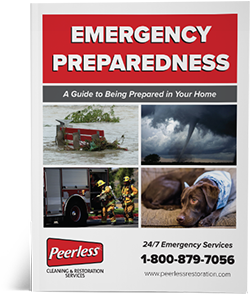What to Do When You Experience Water Damage in Your Home
Experiencing water damage in your home can be overwhelming and stressful. Whether it’s due to a burst pipe, flooding, or a leaking roof, acting quickly is crucial to minimize the damage and start the restoration process. Here are the essential steps to take when you experience water damage in your home.

Air Mover Fan Drying Floor and Wall.
1. Ensure Safety First
Before addressing the water damage, ensure that your home and the area is safe to enter. If the water damage is severe, there may be structural damage or electrical hazards. Turn off the electricity and gas supply to your home if you suspect any risk. If you’re unsure about the safety of your home, it’s best to wait for professional help.
2. Stop the Water Source
Identify the source of the water and stop it if possible. For example, if a pipe has burst, turn off the main water supply. If the water damage is due to weather conditions, such as heavy rain or flooding, take steps to prevent more water from entering your home. You must stop the water source before any restoration actions can be taken. Call a plumber if necessary.
3. Seek Professional Help
With any water damage, we always recommend hiring a professional water damage restoration service like Peerless. We have the equipment and expertise to thoroughly recognize wet areas, dry the structure, clean any debris, and restore your home. Proper drying can also help prevent long-term damage and potential mold growth.
4. Document the Damage
Before you begin cleaning up, document the damage for insurance purposes. Take photos and videos of the affected areas, including any damaged belongings. This documentation will be important when filing an insurance claim.
5. Remove Standing Water
Once it’s safe to do so, begin removing standing water from the area if possible. Use buckets, mops, or a wet/dry vacuum to remove as much water as possible until professional help arrives. The quicker you remove the water, the less damage it will cause.
6. Remove Damaged Items
Remove any items that have been damaged by the water, such as furniture, rugs, and personal belongings. Some items may be salvageable with proper cleaning and drying, while others may need to be discarded. Place damaged items in a dry area to prevent further contamination. Do not throw anything away until after you have talked with your insurance adjuster.
7. Clean and Disinfect
Once the area is dry, it’s important to clean and disinfect all affected surfaces to prevent mold and bacteria growth. Use a mixture of water and bleach or a commercial disinfectant to clean walls, floors, and other surfaces. Wear protective gear, such as gloves and masks, while cleaning.
8. Check for Mold
Mold can begin to grow within 24-48 hours of water damage. Inspect the affected areas for signs of mold, such as discoloration or a musty odor. If you haven’t already done so and you find mold, it’s best to contact a professional mold remediation service, like Peerless, to safely remove it.
9. Contact Your Insurance Company
Contact your insurance company as soon as possible to report the water damage and start the claims process. Provide them with the documentation you gathered and follow their instructions for filing a claim. Your insurance policy may cover the cost of repairs and restoration.
10. Prevent Future Water Damage
Once the immediate water damage has been addressed, take steps to prevent future incidents. Regularly inspect and maintain your plumbing, roof, and gutters. Consider installing a back up sump pump in your basement and a smart water alarm system to alert you to potential leaks.
By following these steps, you can effectively manage water damage in your home and begin the restoration process. Acting quickly and methodically will help minimize the damage and get your home back to normal as soon as possible.



